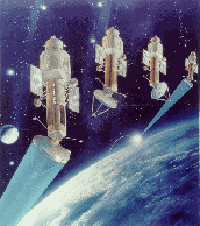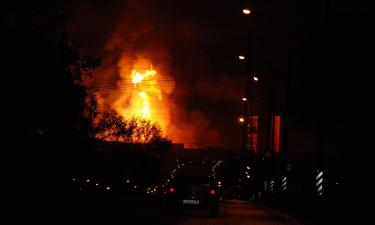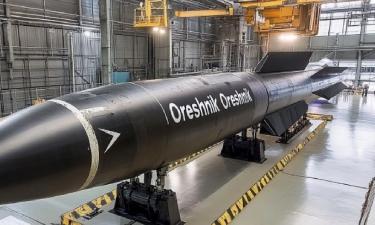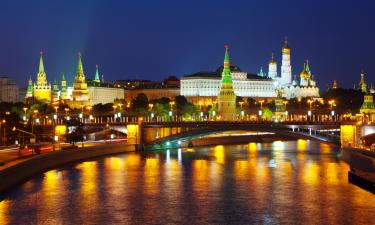Modern laser technologies to make Star Wars a reality soon
Star Wars today is no longer a fantasy. Thanks to laser technologies the smoke and stink and deafening crack of munitions would be replaced by invisible beams of focused light. Modified 747 jets, equipped with laser weapons, would blast ballistic missiles while they were still hundreds of miles from striking our soil. “Directed-energy” cannons would intercept incoming rockets at the speed of light, heating up the explosives inside and causing them to burst apart in midair. And this wasn’t some relic of Star Wars visionaries. These were modern plans, initiated barely a decade ago, that would be realized not in some far-off future, but soon. Out in the New Mexico desert at the White Sands Missile Range, the U.S. Army’s Tactical High Energy Laser shot down dozens of Katyusha rockets and mortars. In 2004, Air Force contractors began test-firing the chemically powered beam weapon for a retrofitted 747, the Airborne Laser.

Then reality set in, and these recent efforts to wield battlefield lasers suddenly began looking as doomed as Star Wars. Generating the megawatts of laser power needed to detonate a missile required hundreds of gallons of toxic chemicals - ethylene, nitrogen trifluoride.
The weapons grew bulky. Worse, after a few shots, the lasers would have to be resupplied with a fresh batch of reactants. The logistics of hauling those toxins either through the air or across a battlefield made generals shiver. And questions lingered about how effectively the beams would penetrate dust and rain. Last year, the Army canceled its Tactical High Energy Laser project, and some think the wildly overbudget beam-firing 747 may be next to go.
But don’t count laser weapons out yet. The ray-gun potential of weapons that fire with precision over tremendous distances is far too militarily appealing, particularly at a time when American soldiers are fighting guerrilla foes who melt quickly into the background. “If I could reach into a crowd and take out one or two targets without a puff of dust or a crack of a rifle - if I could fire for a long time, without ever having to reload,” says Marine Corps Major General Bradley Lott, “that’s something the United States Marine Corps would be very, very interested in pursuing.”
But if chemical lasers can’t cut it, what will make beam warfare a reality? The answer is twofold. First, the Pentagon is slowly realizing that if it wants results, it has to lower its expectations. Shoot down mortars first, for example, then missiles.
Lasers all work in pretty much the same way: Excite certain kinds of atoms, and light particles - photons - radiate out. Reflect that light back into the excited atoms, and more photons appear. But unlike with a lightbulb, which glows in every direction, this second batch of photons travels only in one direction and in lockstep with the first. And instead of shining in every part of the spectrum, laser light is all the same wavelength, which depends on the “gain medium” - the type of atoms - you use to generate the beam. Shine enough of the focused light, and things start to burn.
The first laser experiments in the 1960’s used ruby crystals as the gain medium. But solid-state lasers like these originally couldn’t produce more than a few hundred watts of power. That’s fine for eye surgery. Knocking down a missile - as the military first dreamed of doing - takes millions of watts of power, which is why researchers turned their efforts toward the ultimately failed chemically powered lasers.
There is another kind of laser, however, one that requires no bulky tubs of toxic chemicals, no crystals - no gain medium whatsoever to generate its beam. It’s called a free-electron laser (FEL), and it uses a turbocharged stream of electrons to kick-start its reaction. This form of laser dominated the Star Wars national missile-defense program; it was thealmost mythical beast that scientists George Neil and Bob Yamamoto toiled on together for defense contractor TRW.
It was hamstrung by high power expections. But both Neil, the project’s chief scientist, and Yamamoto, a project engineer, were true believers. They thought that with enough research, a free-electron laser might really be able to stop a rogue missile. And the breakthroughs required in atomic physics, optics and superconductivity would have far-reaching benefits, even if an ICBM never got zapped. But after 10 years and half a billion dollars of investment, the free-electron laser in TRW’s lab peaked out at a meager 11 watts—a tenth of what a lightbulb generates.
After several more years of executives continuing to promise 10, 20 megawatts of power, the Pentagon finally pulled the plug in 1989, and Star Wars went down in a flameout of legendary proportions. Neil particularly resented the way the reckless projections had doomed the program and turned his directed-energy ideas into a laughingstock. At scientific conferences for years afterward, Neil would advocate for reviving free-electron research. “People thought we were insane and the technology was unfeasible,” he says. “And on the bare evidence, they were right.”
However the researchers didn’t stop their work and with the help of sponsors continued their studies. Their effort were praised.
The ammunition in Yamamoto’s new solid-state laser is a set of four-inch square transparent slabs tinged with the slightest hint of purple. They’re exactly what you’d expect to find powering the cannons on board the Enterprise or the Millennium Falcon.
A magazine of these see-through slabs isn’t exactly infinite, though; for every 10 seconds they fire, they need at least a minute to cool off. But the slabs—ceramics infused with the element neodymium, the atoms that, when excited, produce the photons that eventually become the laser beam—can never be drained of their potency. And they’re a lot less hassle than bulky chemical tubs. They’re a big reason why Yamamoto’s machine squeezes into a single 30-foot-long lab. It’s not hard to imagine the whole thing packed into a small truck, knocking mortars out of the air. “I’ve been thinking about deployment for a long time,” Yamamoto says.
The Livermore laser, pushed forward by larger gain-medium slabs and increased pulsing speeds, hit 45 kilowatts of power in March 2005. That’s more than triple what the laser could do three years before.
A solid-state laser like his could now make it to a war zone in part because the bar for energy weapons has been lowered. Blasting an ICBM from 100 miles away requires megawatts of light. Solid-state lasers might never get that powerful. But heating up a mortar from a mile away until the explosives inside detonate—that takes only 100 kilowatts.
However, there’s a nervous tension among the researchers. Each of the slabs is surrounded by an array of 2,880 light-emitting diodes, like the ones in a clock radio. When they shine, they excite the atoms in the transluscent ceramic composites and begin the laser chain reaction. The problem is that the more the diodes glow, the more that temperature disparities degrade the quality of the beam. The infrared ray—invisible to the naked eye—starts to lose some of its quality. Which is bad, because the Pentagon wants to see a nice, tight beam, as well as a powerful one. And the Defense Department’s team of testers is going to investigate in the results of studies. And it is the Defense Department’s team of testers who determine whether the scientists will get the cash to make its next laser: a 100-kilowatt, weapons-grade machine.
Source: Popular Science
Prepared by Alexander Timoshik
Pravda.Ru
Subscribe to Pravda.Ru Telegram channel, Facebook, RSS!





